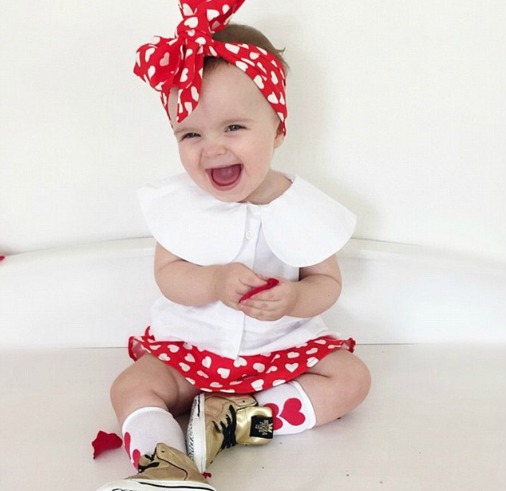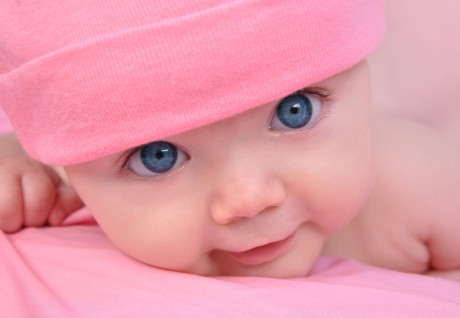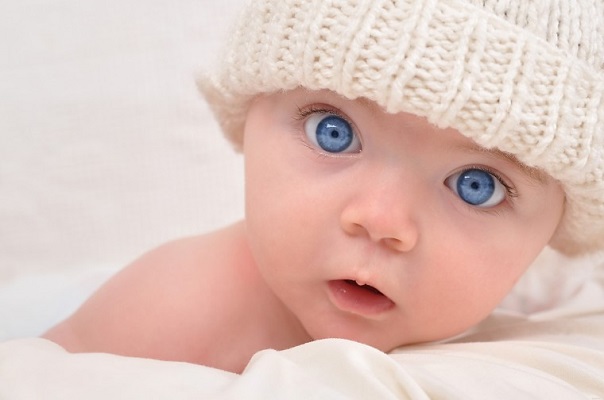Content
- One year old baby development
- 1 year old baby care
- Nutrition for 1 year old baby
- Daily routine for a child aged 1 year
- Classes with a one-year-old child
- Games and toys for children
- Medical observation for one year old baby
In the first year of his life, the baby has already learned a lot. In his vocabulary there are some of the simplest words – “mom”, “dad”, “bi-bi”, “meow”, “give”. He knows the names of body parts, faces, favorite toys, can show them at the request, distinguishes the intonation of speech, can dance or swing to the music. He joyfully reacts to the appearance of familiar faces, waves his hand at farewell, sends kisses, imitates the actions of adults.
One year old baby development
By this period, his mobility and curiosity increase. He climbs up on the couch, walks around the rooms, looks into the secret corners. He can move both on all fours and stand on his feet. He likes to “host” in the kitchen: open the doors of cabinets, examine the contents of jars and boxes. The kitchen is quite a traumatic place, so you cannot leave one baby in it. By the year the child tries to hold a pencil in his hand, he really likes to draw. Therefore, during this period, his first drawings appear on a piece of paper or wallpaper.
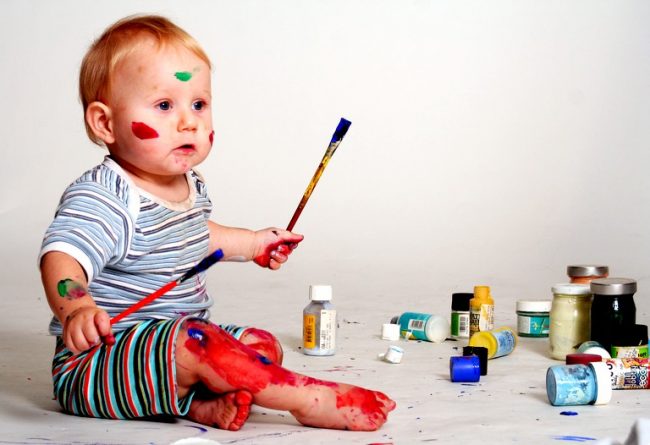
Many kids are very fond of when they read books, show vivid pictures. If the child does not sit still, you can talk and read with him when he plays, for example, collects a pyramid, considers cubes. Even if he does not pay attention to you visually, he involuntarily absorbs your words like a sponge.
1 year old baby care
Every day, the baby becomes more independent. He already drinks from the cup himself, tries to eat with a spoon, even if he doesn’t always succeed in doing it neatly. The role of parents in caring for a child is to teach them self-care skills, monitor their regimen, nutrition, hygiene, health.
The child, most likely, still does not always ask for a pot himself. To speed up this process, it is necessary to plant it on this hygienic “throne” after eating and every hour and a half.
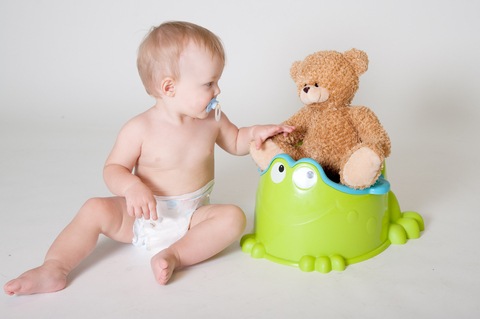
Gradually, he will develop a habit, and if you forget to put him there, he will ask you about it.
The room where the baby plays and sleeps, it is often necessary to ventilate and carry out wet cleaning. Make sure that there are no drafts, and in the play area the carpet is laid on the floor. Plastic toys must be washed periodically with soap and water. To gradually accustom the child to order, after the game all the toys must be folded in a drawer or placed on a shelf. First, you need to do this together with the baby, then he will be able to cope on his own.
Nutrition for 1 year old baby
The first six months after his birth, the baby ate exclusively breast milk or milk formulas. Then vegetable mashed potatoes, milk porridge, steam cutlets, cookies and other “adult” food were gradually introduced into his diet. He got his first teeth, he learned to chew. But this does not mean that he is ready to eat food from the general table.
At 1 year old, food for babies also needs to be prepared separately. Serve food in a puree or finely chopped form. In a year, a child should already get acquainted with products such as chicken or quail eggs, potatoes, pasta, oatmeal, rice, buckwheat cereals, raw and boiled vegetables and fruits, minced meat (steam cutlets, baked souffle), bread, butter, dairy soups. In the diet, you can enter chopped greens – parsley, dill.
Food is not fried, but cooked, steamed or cooked in the oven. Solid vegetables and fruits are served in a pureed form (apples, pears). Bananas, soft pears, can be cut into small pieces, peeling. It is recommended to give cherries, plums, cherries in boiled form, in the form of mashed potatoes and compotes.
The stomach of a one-year-old baby is small, but the body needs a lot of energy. Therefore, the child needs to be fed in small portions, but often.
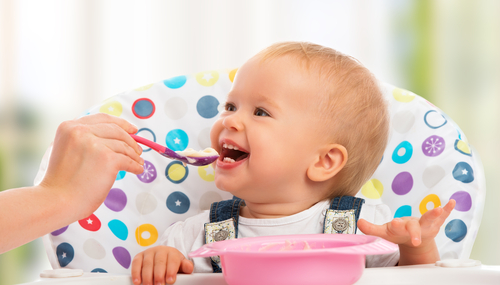
Five times a day: breakfast after waking up, lunch, afternoon snack, dinner and milk or kefir with cookies for the night. After about six months, you can switch to four meals a day, refusing to feed before bedtime. If a child has poor appetite, bright dishes, napkins or beautifully decorated food in a plate will help to awaken him.
Daily routine for a child aged 1 year
A year is such an age when you can begin to develop home rituals and traditions with your child that will accustom him to the regime. They will give him a sense of permanence, will calm and tune in to certain actions. For example, he will normally perceive that after a night’s sleep you need to brush your teeth and do exercises. Repeat them at the same time over a long period. For example, in a crib, before going to bed, read a book or kiss at night.
If the baby does not like to sleep during the day, after waking up, he definitely needs to do something pleasant – to feed him a tasty afternoon snack, give sweetness, play with him, allow a little foolishness. Knowing that after sleep something interesting awaits him, he will quickly get into bed and fall asleep.
Do not set the regime as in a pioneer camp and paint the baby’s day in minutes. Look at his mood, well-being, sometimes you can move away from the planned schedule. The mode must be adjusted as the baby grows up. Enter additional points and remove those that have lost relevance. For example, increase the time of walks, games, reduce the duration of daytime sleep, etc. The main thing is to follow the sequence – sleep, wakefulness, play, food and maintain intervals between feedings – about 3-4 hours. Submitting to the daily routine, the child will have enough time for rest and wakefulness. He will be less tired and naughty.
Classes with a one-year-old child
During this period, the child loves to perform joint actions with adults, tries to help them and repeats movements – sweeping, vacuuming, stirring food. He gets to know the surroundings. He wonders how the lights turn on, the phone rings, music plays. He can perform the same actions several times. For example, flip a switch while observing a light bulb, or press the remote control buttons on the TV. He analyzes and tries to figure out how it works. Do not refuse him this pleasure.
During joint actions, talk with him, for example, when dressing the baby. Ask to extend the handle, raise the leg, bend your head. He will gladly help dress himself. At this age, you can accustom your child to tidiness – substitute a nose or mouth under a napkin or handkerchief. Extend the handles to wash them.
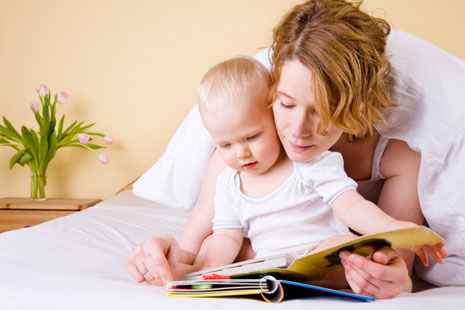
At this time, the baby is easily trained. Therefore, introduce it to the world, explaining and telling in accessible phrases and words, how it works, why it happens, how to behave in different situations. You can see the rain through the window, look at moving cars, people walking.
Do not worry, even if the baby does not speak yet, he understands a lot and remembers the names of objects.
Already at this age, you can introduce the baby to possible dangers – show that the needle is pricked, it hurts, and the water is very hot, so you can get burned.
Games and toys for children
Even if a child has many toys – dolls, bunnies, bears, clowns, children’s dishes, he still does not know how to play with them. He perceives them simply as objects. Therefore, he needs to show how to feed the doll, how to swing and cradle it to put to sleep. He can be asked to regret and stroke a teddy kitten or a bunny, because he is hurt, his foot hurts. This is how compassion develops..
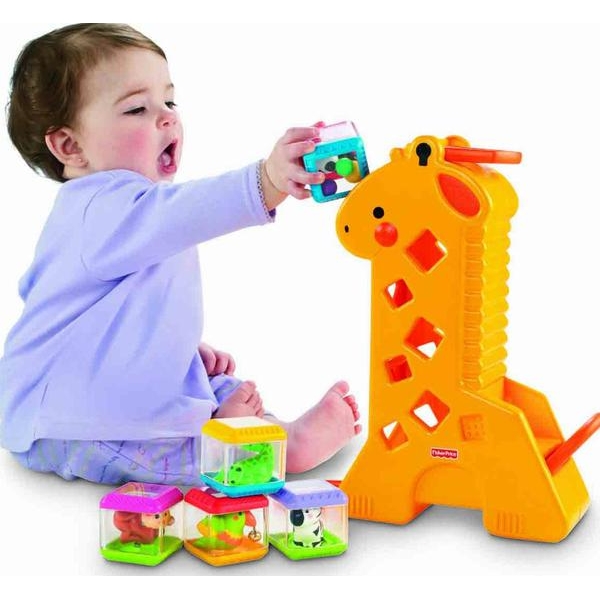
To develop logical thinking, by the year you can purchase toys such as a pyramid, cubes, balls of different sizes and colors. The kid loves to play with them, trying with a concentrated look to string the rings on the pyramid pin or stick a round ball into a square hole. And it is not necessary that he will do everything right the first time. Rather, the opposite. Gently push it in the right direction, explaining how and why you need to act this way.
To develop the baby’s fine motor skills of fingers, you can start playing with him in the simplest games-nursery rhymes – for example, “Magpie-crow”. Bend and massage each finger, saying what the magpie should do. You can put a piece of soft plasticine in his handles, and show how you can crush it in a cam or pinch it off with a finger. You can pour cereals into the box – semolina, millet and let the baby play. Let him gather her in fists or pass through his fingers. Do not scold him if the cereal spills onto the floor, it can be vacuum cleaned in a couple of minutes.
Medical observation for one year old baby
From birth, the baby is under the supervision of doctors. Basically, this is a local pediatrician and nurse who monitored his physical development – growth, weight, and vaccinated. Now the baby has grown up, he no longer needs monthly monitoring, just one visit in two months will be enough.
In order not to miss possible deviations in the state of health, he is recommended to do an ultrasound of the hip joints, abdominal cavity, brain and go through individual medical specialists. In a year, it must be shown to an orthopedic surgeon, optometrist, neurologist, otolaryngologist. It is advisable to vaccinate against rubella, measles, mumps, pass a general analysis of urine and blood.
Useful Tips for Parents
If your child does not speak by the year, you should not be upset and take this fact to heart. He will certainly speak, only a little later. All children are different and you should not expect absolutely identical results from them. Much depends on the temperament of the child, his individual characteristics and other factors. Therefore, if the neighbor in the sandbox Vasya speaks almost in verse, and your Andryusha or Tanechka knows only two words, it does not matter. This does not reflect mental ability, and does not affect future grades in school.
Do not wind yourself and do not demand from the child the impossible. Be patient and continue to educate and develop it further..
Remember that in a year your unintentional fidget is at increased risk. So don’t leave it for a single minute.
It is necessary to raise fragile vases and figurines upstairs so that the baby does not break them and do not get hurt, hide small and sharp objects, medicines, and close electrical outlets with plugs.






